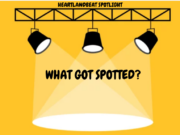Extension Update from Jenny Rees
UPCOMING EVENTS:
Sept. 27:Â Corn Residue Field Day, Noon, near Ainsworth, RSVP 402-387-2213
Sept. 27:Â Corn Residue Field Day, 5:30 p.m., Northeast Community College, RSVP 402-387-2213
Sept. 28:Â Corn Residue Field Day, 1:30 p.m. USMARC near Clay Center, RSVP 402-362-5508or jrees2@unl.edu
Sept. 28:Â Corn Residue Field Day 5:30 p.m., Buffalo Co. Extension Kearney, RSVP 308-236-1235
Nov. 14:Â Ag Land Lease Workshop and Flexible Cash Lease Workshop, 4-H Building, York
Dec. 1:Â Solar Power in Ag Workshop, 4-H Building, York
Corn Residue Cooperator Field Days: A reminder of field days being held throughout Nebraska for farmers to understand the impacts of grazing and baling corn residue on subsequent crop yields; effect of grazing and baling corn residue on soil components; and sharing survey results regarding what crop consultants and grain farmers think about grazing corn residue. This research had been conducted on cooperating farmers’ fields and was funded by a Sustainable Ag Research Education (SARE) grant. These free field days will be held at six locations across Nebraska and I’ll list the closest ones here. On September 27th at Noon near Ainsworth (Contact Denny Bauer 402-387-2213) and the Northeast Community College in Norfolk beginning at 5:30 p.m. with supper (Contact Denny Bauer 402-387-2213); Sept. 28th at USMARC Building 1 Auditorium near Clay Center beginning at 1:30 p.m. with refreshments and adjournment at 3:45 p.m. (please RSVP to jrees2@unl.edu or 402-362-5508); Buffalo County Extension Office in Kearney with 5:30 p.m. dinner (contact Brent Plugge 308-236-1235). Hope to see many of you at the Clay Center field day this week!
Late Season Corn Stalk Nitrate Tests: This is a tool to assess your nitrogen management program. Dr. Charles Shapiro, Nebraska Extension Soil Fertility Specialist shares they can help determine how much applied nitrogen remained post-harvest and, when used along with your knowledge of field and cultural practices, can help you fine-tune your soil management strategy and possibly adjust your application rates next year, The test, developed by researchers at Iowa State University, is best used in corn fields where moisture was not a limiting factor. This year may be particularly interesting since heavy rains earlier in the year, particularly in eastern Nebraska, may have contributed to increased nitrogen leaching and/or denitrification below plant-available levels. Given the wet conditions, nitrogen applications planned to be applied through irrigation, may not have been made.
Take corn stalk samples as early as when the milk line is one-fourth of the way down the kernel and up to three weeks after black layer formation in 80% of the kernels. Take an 8-inch segment of cornstalk from 6 inches to 14 inches above the ground. Stalk samples should be kept cool and wrapped in paper rather than plastic to avoid mold and sent to a soil testing laboratory.
Charlie shares the best use of this test is to compare different treatments, such as a strip trial where extra nitrogen was applied sidedress. The information from the stalk nitrate test is best interpreted with yield data and used as part of your overall nitrogen management assessment.
For more information on how to take the test in your fields, and how to interpret the results and consider the findings when planning next year’s nitrogen management, please check out this week’s CropWatch at http://cropwatch.unl.edu to view Charlie’s article and the resources listed. We also have NebGuides available in the Extension Office.Â
Thistles and Other Weeds in Pastures: I’ve been receiving questions on thistle and other perennial broadleaf weed control in pastures. October through early November is a great time to target control of these weeds as the herbicide is moved down to the root system as the plants are naturally storing carbohydrate reserves there. If you walk into pastures now, you most likely will see thistle rosettes that are small and flat on the ground. Dr. Bruce Anderson, Extension Forage Specialist shares they are particularly susceptible to herbicides in this form. I really like some of the newer herbicides, not only for thistle control in the fall but also for broadleaf/forb control in the spring. Bruce also suggests that herbicides like ForeFront, Milestone, and Chaparral work well for thistle control. Two other very effective herbicides are Tordon 22K and Grazon. Be careful with all these herbicides, but especially Tordon and Grazon, since they also can kill woody plants, including trees you might want to keep. Another word of caution is when using these herbicides listed above, knowing grazing restrictions listed on the label and having that in mind is very important if animals are pastured and then turned onto cornstalks that will be planted into soybeans or alfalfa next year. Bruce shares another option is 2,4-D, which works well while it’s warm; however, you will get better thistle control by using a little less 2,4-D and adding a small amount of Banvel or dicamba to the mix. Other herbicides like Redeem, Cimarron, and Curtail also can control thistles in pastures. No matter which weed killer you use, be sure to read and follow label instructions and spray on time to assure cleaner pastures next spring. While it was difficult this year with the drought in portions of the state, overgrazing pastures does tend to lead to more weeds. Avoiding overgrazing allows grass stands to thicken and compete with weeds and thistle seedlings.
Lawn Care: Two turfgrass diseases are commonly seen in September, powdery mildew and rust, both foliar (leaf) diseases. Unlike most other foliar diseases, powdery mildew does not require free moisture on the leaf blade. It appears as if turf blades have been dusted with flour and causes a thinning of the stand. Best control efforts include applying a fungicide in advance of the infection and increasing the air circulation in the landscape. Rust commonly occurs on under-fertilized turf as is common in late summer. In many cases, control can be achieved through proper nutrient application.
































